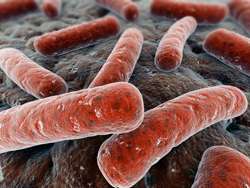Credit: Thinkstock
Secretion of bacterial proteins is an essential biological process with biotechnological and biomedical impact on human health. European scientists studied a universal and widely conserved bacterial secretory pathway towards its utilisation in biotechnology and medicine.
The coordinated secretion of proteins by bacteria consists of an essential biological process with tremendous impact on human health. Biotechnology is studying these systems in order to optimise their performance as small 'factories' for the production of biopharmaceuticals, whereas biomedicine is interested in their role in human pathogenicity.
The general secretory (Sec) pathway is responsible for the secretion and/or translocation of the vast majority of bacterial proteins in most bacteria. Recently, a second mainstream export system was discovered called the twin-arginine translocation (Tat) pathway. This system differs significantly from the Sec pathway in terms of structure, mechanism and specificity. This is a widely conserved and essential bacterial protein secretion pathway that has also been involved in the secretion of virulence factors by human pathogens.
An EU project TAT Machine was initiated with the primary goal of shedding light on Tat-dependent bacterial protein secretion and translocation. The ultimate goal was to create a biotechnological platform for the production of a wide variety of proteins with therapeutic properties, based on the Tat pathway.
One additional objective of the project was to clarify the role of Tat in pathogenic and non-pathogenic organisms, collecting at the same time functional and structural information. This information will be used in the future for the design of specific inhibitors. Due to the unique structural and functional features of Tat, which are found only in bacteria, it represents an excellent antimicrobial drug target.
A very important advantage of Tat in comparison to the Sec pathway is that it can secrete large multimeric protein complexes in their native, functional conformation. This constitutes a huge benefit for the biotechnological production of biopharmaceutical proteins. Consequently, TAT Machine partners exploited and expanded the capabilities of Streptomyces as a Tat-dependent secretion system. The outcome of these efforts was the application of a patent for the production of proteins of medical interest using a Tat-dependent biotechnological strategy. A second one is under preparation.
The TAT Machine project's achievements laid the grounds for a comprehensive exploitation of the Tat pathway for the production of proteins as well as a potential antimicrobial target.
Provided by CORDIS




















